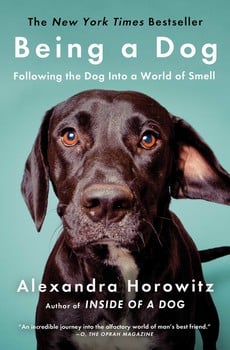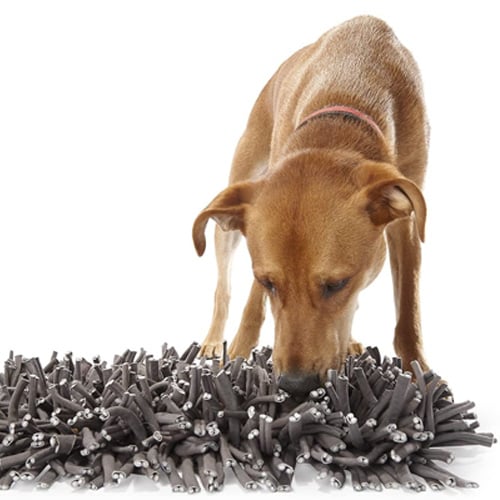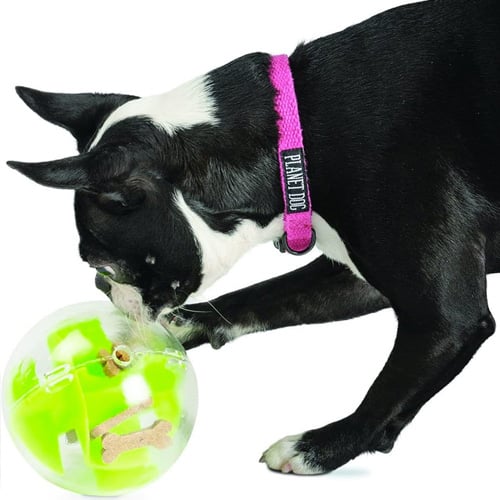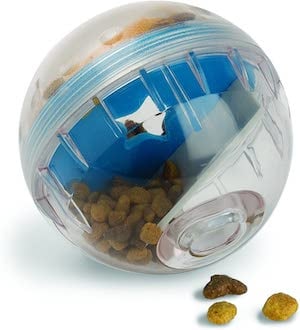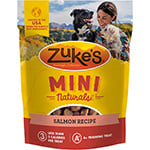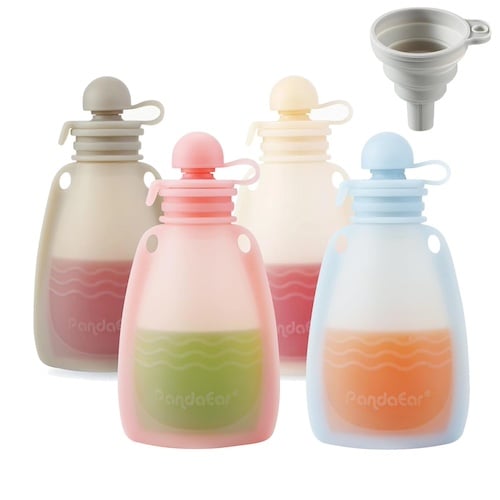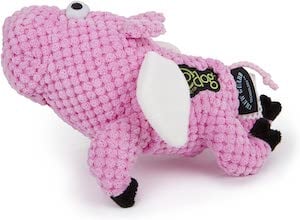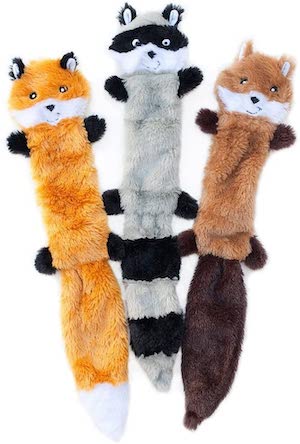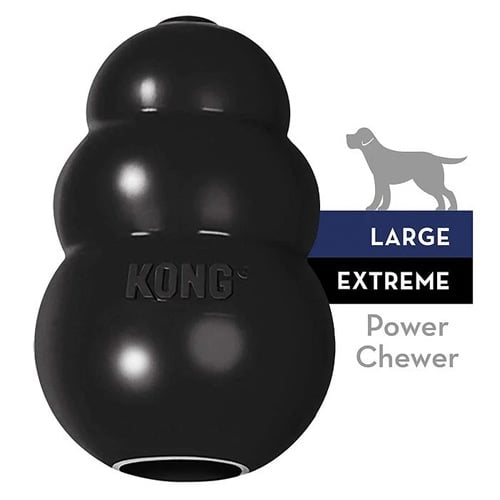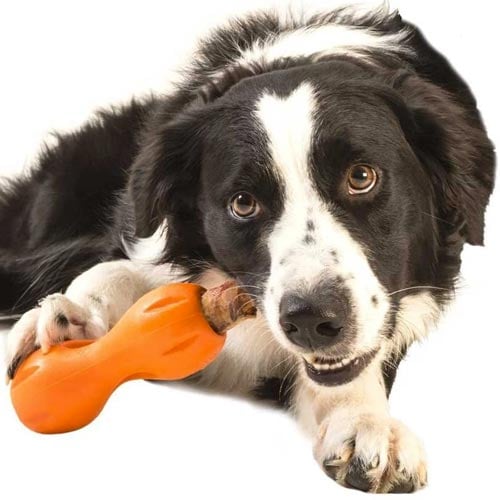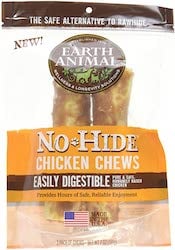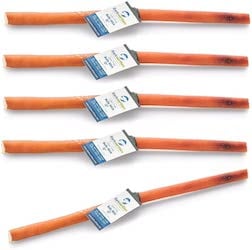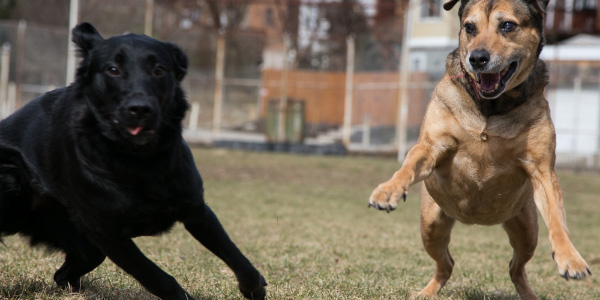 If you have a hyperactive dog, it can feel overwhelming when you just want to relax at the end of a long day.
If you have a hyperactive dog, it can feel overwhelming when you just want to relax at the end of a long day.
All they want to do is play when you really just want to sit back and relax.
And even after some physical exercise, your dog might still be bouncing off the walls because they're overstimulated.
Or perhaps your dog gets anxious due to separation anxiety or noises like thunderstorms or fireworks, and you find yourself trying to soothe and comfort them to no avail.
The constant pacing, barking, or clinginess can be heartbreaking. Let's talk about three easy ways to soothe your dog and help calm them down, using naturally calming activities: sniffing, licking, and chewing.
The Calming Trifecta for Dogs: Sniffing, Licking, Chewing
Besides providing your dog with enough physical exercise appropriate for their age and breed, you can also engage their brain in relaxing activities that satisfy their canine instincts. I call these the "Calming Trifecta."
Sniffing, licking, and chewing release many feel-good chemicals like serotonin, dopamine, and endorphins in your dog's brain.
Sniffing
A dog's sense of smell is incredibly powerful, much stronger than our human sense of smell, and it's the primary way they explore their environments.
In fact, dogs have a sort of "second nose" that we don't have — the vomeronasal organ, located between the roof of their mouth and their nostrils. This allows them to detect scent molecules that regular sniffing misses, such as pheromones.
If you want to learn more about your dog's sense of smell, I highly recommend reading "Being a Dog: Following the Dog Into a World of Smell" by Alexandra Horowitz.
Being able to sniff is so important for our dogs. The part of the brain that's primarily activated by sniffing is also the part of the brain that releases dopamine, a chemical important in regulating anxiety.
Sniffing can be self-soothing, reduce stress, and focus excess energy into a more calm behavior.
Take Your Dog on Sniffari Walk
Sniffaris are walks where your dog gets to stop and smell the roses (or tree ... or grass ....) at their own pace. This is a perfect enrichment activity for senior dogs who might not be up for more physically demanding walks, but still have energy to burn.
Sniffaris are meant for meandering and allow a chance for your dog to decompress. Learn more about sniffaris in this article, and watch my dog Sookie in the video below to see it in action.
Feed Your Dog With a Snuffle Mat
Ditch the food bowl! A great way to tire your pup out is to make their mealtimes more engaging. Dogs are natural foragers, so sniffing out their kibble or treats from a snuffle mat satisfies this instinct.
I rotate between two different snuffle mats with my dogs, this popular Snuffle Mat and the PAW5 Wooly Snuffle Mat. The Difflife is pretty large and has two sides with various "puzzles" to sniff through, while the PAW5 mat is much smaller but with more tightly-packed fabric "grass" — perfect for my new puppy to explore.
Here's Sookie checking out the Difflife Snuffle Mat for the first time:
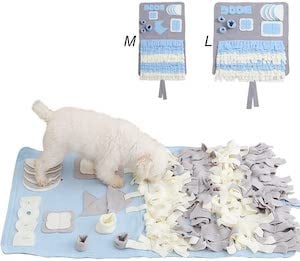
You can also make your own snuffle mat if you feel crafty. And if the weather is nice, you can simply scatter your dog's food throughout the grass in your yard for them to sniff out.
Use Interactive Treat Balls or DIY Puzzles
Another way to put your dog's nose to work as they forage for treats is to use an interactive treat ball. This works not only their nose but also their problem-solving skills.
I have two treat balls that I use: the Planet Dog Orbee-Tuff Mazee Ball and the Pet Zone IQ Treat Ball.
I like that the Orbee Ball is made from non-toxic rubber, so when my dog is rolling it around the wood floor or knocking it against the wall, it doesn't make a lot of noise.
And the IQ Treat Ball can be adjusted to different levels of difficulty depending on which one of my dogs is using it — my senior dog is a master of puzzle balls, while my puppy can get frustrated if it's too hard.
If you want a more stationary sniffing puzzle, make your own Food Tube Puzzle toy using paper towel or bathroom tissue rolls and a shoebox. See how in this video:
Look around your home for what might work to create a DIY dog puzzle. You can see what I did when I needed my dog to be calm during a virtual work meeting in this video:
Click here for more DIY Dog Food Puzzle ideas you can make at home.
Play Nose Work Games at Home
You can give your dog's nose a job by hiding treats throughout your home for them to find. This game really activates that seeking system part of their brain, resulting in those feel-good endorphins!
Start easy when you're first teaching your dog how to play "Find It!" Put your dog in a sit-stay or a down-stay, and then hide the treat somewhere where they can see where you put it. Release them from their stay by saying, "Find it!"
If they need encouragement to find the treat, don't hesitate to help them out. Once they find the hidden treat, give them lots of praise. As they get the hang of it, start making the hiding spots harder and hide multiple treats for them to find.
If your dog really enjoys finding things with their nose, consider getting into scent sports. Nose work can be fun for both dog and handler — you can even train your dog to sniff out truffles (yum!).
Get more nose work games to play at home here.
Connect with a local dog sport club or check out these virtual nose work training classes through Fenzi Dog Sports Academy to get started from home.
Be Smart with Your Dog Treats!
You don't want your dog to turn into a two-ton-wonderbun by overloading them with calories while playing nose work games or using a snuffle mat. I usually rely on just regular kibble when scattering treats on my dogs' snuffle mats, and sometimes add in a few high-value treats as a special prize.
I recommend using Zuke's Mini Naturals Dog Treats, which are just 2.7 calories per treat — and you can easily dice them up into smaller pieces. I've even used small pieces of raw carrot or green beans in my dogs' interactive puzzles.
Check out other healthy options in our article "Choosing the Best Dog Treats."
Licking
Have you ever just zoned out while doing a repetitive activity, such as knitting or coloring? That repetitive movement can be quite calming for us, and licking can do the same for our dogs. Licking releases endorphins and serotonin, which regulate anxiety and help your dog feel calm and less anxious.
Smear Food and Treats on a Licking Mat
One of my go-to activities for my new puppy is giving him a licking mat smeared with a bit of his wet food, peanut butter, Greek yogurt, or canned pumpkin (if using pumpkin, make sure the brand is pure pumpkin and not pie-filling mix). And sometimes, I do four different smears on one mat to mix it up and see which my dog prefers.
You don't need to spread a whole lot to get a long licking session, so this is a great lower-calorie option instead of a fully stuffed toy or puzzle. And you can freeze the mat to make it last even longer or to use on a hot day. I use the LickiMat Classic Soother Slow Feeder, which is dishwasher-safe.
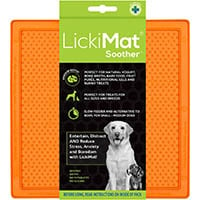
I used the calming activity of licking a treat mat the first day I brought my puppy home. He got a mat to lick in his new puppy play zone, and my older dog got one on the other side of the ex-pen.
It was a great way to introduce him to a new area and helped them settle near each other while having a positive experience. You can see him licking away that first day in this video:
For dogs who get anxious during thunderstorms or fireworks, giving them a lick mat to work on in their safe space during these times can be really helpful to calm them down. Especially when used in conjunction with other calming aids such as a pheromone diffuser, noise masking with a fan or sound machine, or, in severe cases, prescription anti-anxiety medication.
Deliver Training Rewards with a Food Tube
If your dog is a licker or tends to have a "hard" mouth when taking treats that hurt your fingers, give them training rewards using a squeeze food tube.
I love these as an alternative to giving treats one at a time, especially when I'm out socializing my puppy in the neighborhood. It's an easier way to give a continuous reward, and using his wet food was higher value than dry kibble (and easier on his tummy compared to a lot of training treats).
Watch Fozzie use his treat tube in this video:
I use a travel-sized squeeze tube I found at the local drugstore — like the ones made for shampoo or conditioner.
Just make sure you find one that has an easy-to-open cap with a large enough opening for your dog's preferred wet treat.
When Dog Licking is a Problem
Dogs will lick during self-grooming, but excessive licking of themselves can also be a sign of other issues, such as allergies or underlying pain. It can also be a symptom of anxiety, obsessive-compulsive disorder (OCD), boredom, or over-arousal, and could lead to an acral lick granuloma.
If you notice that your dog seems to be constantly licking themselves or certain items, you do want to determine the underlying cause.
Speak with your veterinarian about possible medical reasons, and connect with a certified trainer or behavior consultant if it has become obsessive behavior.
Many dogs will seek the endorphin rush they get from licking, and we want to make sure that they're not becoming obsessed or lick themselves to the point of injury. If their licking is due to anxiety or boredom, providing some appropriate licking activities can give their brains something to do.
Chewing
Giving your dog something to chew helps them stay occupied while you can relax at the end of the day. Different dogs have different "chewsonalities," so pick your dog's chews based on their preferences and chew style.
If you have a "destroyer" or "inhaler" dog, you want to make sure that you choose toys that are correctly sized or are stuffing-free.
The last thing you want is to have to rush to the veterinarian to remove a gastrointestinal obstruction. Always supervise your puppy or dog with chew toys or edible chews, so you can remove the toy if it starts to rip apart or becomes small enough to swallow and choke on.
Provide Appropriate Chew Toys
I have a senior dog and a puppy, and they prefer different kinds of chew toys. My older girl is a nibbler, so she's content to just softly chew on squishy stuffies. My puppy is more of a destroyer, so I have to make sure his chew toys are tougher and always watch to see when I need to remove a toy after he's "killed" it.
Both dogs love the plush toys from goDog, and I love that they're super durable. The Flying Pig goDog toy (lovingly called "Grunter" in my home) has been around for more than three years and is still in one piece. My puppy also loves flinging his Skinny Peltz No Stuffing toy around like a dervish.
If you have a super chewer, look for chew toys made from more durable materials like the KONG Extreme or Qwizl from West Paw. Just be aware that no dog toy is truly indestructible.
Give Your Dog Safe Edible Chews
Edible dog chews are useful for giving your dog a quiet activity to enjoy and helpful when dealing with nipping and teething puppies. I switch between using the Earth Animal No-Hide chews (a rawhide alternative) and Odor-Free Bully Sticks from Barkworthies.
I recommend using a bully stick holder to minimize any choking hazard, and always supervise your dog while they're working on an edible chew. If the bully stick isn't too thick, you can fit it into the Qwizl toy I recommend above (see the photo below of Fozzie sleeping on his bully stick Qwizl.
Just be aware that some bully sticks will be too thick or too skinny to fit correctly.
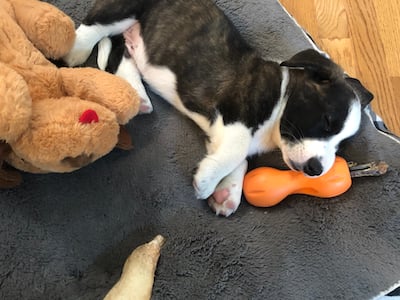 Click to learn more about choosing safe dog chews for your pup and what popular dog chews can actually be dangerous.
Click to learn more about choosing safe dog chews for your pup and what popular dog chews can actually be dangerous.
So there you have it — three easy activities to help your hyper dog settle down and an anxious dog to stay occupied. Your dog might prefer sniffing over chewing or licking over sniffing.
Every dog is unique, so try out different calming activities with your puppy or adult dog, and let us know their favorites in the comments below!


